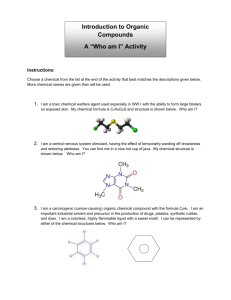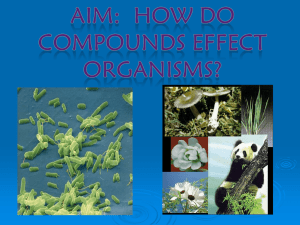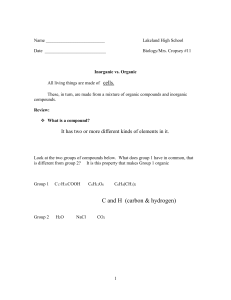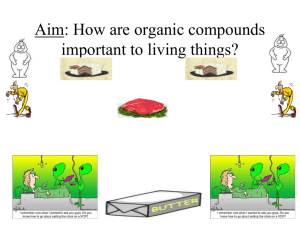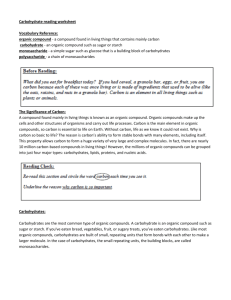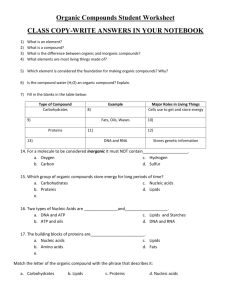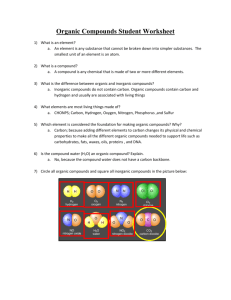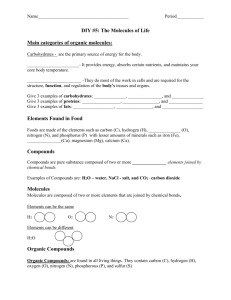maitland/5231/H13Classifying and Identifying
advertisement
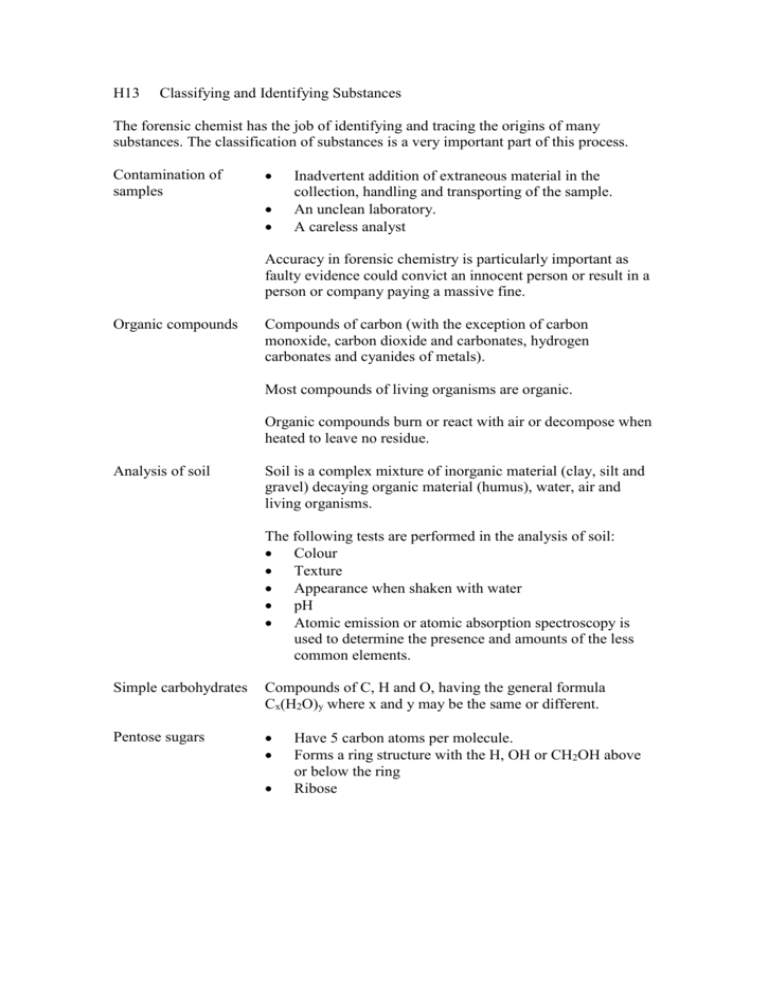
H13 Classifying and Identifying Substances The forensic chemist has the job of identifying and tracing the origins of many substances. The classification of substances is a very important part of this process. Contamination of samples Inadvertent addition of extraneous material in the collection, handling and transporting of the sample. An unclean laboratory. A careless analyst Accuracy in forensic chemistry is particularly important as faulty evidence could convict an innocent person or result in a person or company paying a massive fine. Organic compounds Compounds of carbon (with the exception of carbon monoxide, carbon dioxide and carbonates, hydrogen carbonates and cyanides of metals). Most compounds of living organisms are organic. Organic compounds burn or react with air or decompose when heated to leave no residue. Analysis of soil Soil is a complex mixture of inorganic material (clay, silt and gravel) decaying organic material (humus), water, air and living organisms. The following tests are performed in the analysis of soil: Colour Texture Appearance when shaken with water pH Atomic emission or atomic absorption spectroscopy is used to determine the presence and amounts of the less common elements. Simple carbohydrates Compounds of C, H and O, having the general formula Cx(H2O)y where x and y may be the same or different. Pentose sugars Have 5 carbon atoms per molecule. Forms a ring structure with the H, OH or CH2OH above or below the ring Ribose Hexose sugars Monosaccharides Have 6 carbon atoms per molecule Forms a ring structure with the H, OH or CH2OH above or below the ring Examples include: o Glucose o Fructose o Galactose Carbohydrates that cannot be hydrolysed into two or more simpler sugars (pentose and hexose sugars). Monosaccharides exist as a ring and an open-chain form and these forms are in equilibrium with each other. This equilibrium leads to isomerism. Disaccharides Carbohydrates that can be hydrolysed into simpler forms. Disaccharides are dimers in which the monomer is a monosaccharide. Condensation reactions Polysaccharides Reaction in which two molecules join together with the elimination of a small molecule, such as water. glucose + fructose sucrose + water glucose + glucose maltose + water Carbohydrates that consist of a large number of monosaccharide molecules joined together in a chain. Examples of polysaccharides include Cellulose an insoluble plant polysaccharide made of glucose monomers formed into unbranched chains. Amylose a soluble plant polysaccharide made of glucose molecules formed into unbranched chains. Amylopectin an insoluble plant polysaccharide made of -glucose monomers formed into branch-chains. Glycogen a soluble animal polysaccharide made of glucose monomers formed into unbranched chains. Reducing sugars Have an OH attached to the same C as a ring O atom and are easily oxidised. The presence of a reducing sugar can be demonstrated by tests using the following reagents Tollens’ reagent (colourless solution of silver nitrate in aqueous ammonia). Benedict’s solution (deep blue solution of copper sulfate in alkaline citrate). Fehling’s solution (deep blue solution of copper sulfate in alkaline tartrate). Test for carbohydrate Develops an intense brownish red colour when aqueous phenol is added to an aqueous solution of the sample and concentrated sulfuric acid is added. Test for starch Deep blue complex with iodine. Test for cellulose Calcofluor fluoresces in the presence of starch. Test for glycogen Pale pink colour with starch solution. Lipids Naturally occurring organic compounds that are soluble in non-polar organic solvents. The two classes of lipids are Esters of glycerol (fats and oils) Compounds that have a cholesterol-like structure and including the steroids. Fats and oils Insoluble in water Ester functional group Will dissolve certain dyes such as Sudan III. Hydrolysed by heating with sodium hydroxide solution to form glycerol and the sodium salt of the fatty acid (the saponification reaction). Fats are solid lipids, formed from saturated fatty acids and predominate in animals. Oils are liquid lipids, formed from unsaturated fatty acids and predominate in plants.


